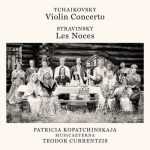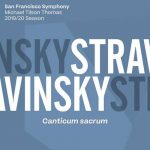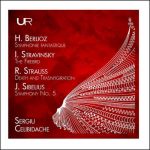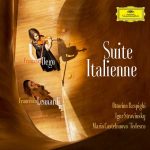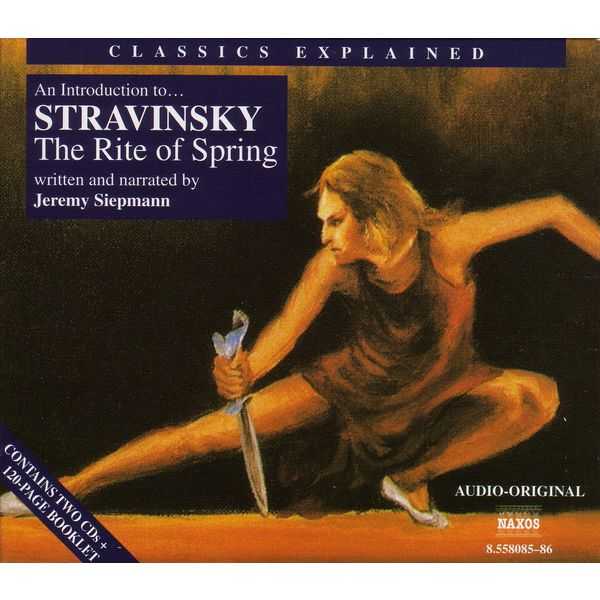
Composer: Igor Stravinsky
Performer: Jeremy Siepmann
Number of Discs: 2
Format: FLAC (tracks)
Label: Naxos
Catalogue: 8558085-86
Release: 2003
Size: 519 MB
Recovery: +3%
Scan: yes
CD 01
Introduction
01. Introduction, background and perspective
02. A gentle, other-worldly start; no sign of the violence to come
03. Music as mosaic; the composer as constructor
04. Two functions of metrical change: going with the flow…
05. …or disrupting it: a sample of metrical violence
06. A stealthy entry (clarinets)
07. Detour: the destabilising properties of chromaticism
08. On melodies, themes and motifs
09. The new cor anglais motif dominates
10. The oboe’s rhythmic motif takes over
11. A primeval awakening
12. A panoply of Stravinskyan birdsong
13. A matter of mode
14. Cue to Introduction
15. Introduction (complete)
Part I: The Adoration of the Earth
The Augurs of Spring / Dances of the Young Girls
16. The ‘Rite of Spring’ chord
17. The great arrival: bitonality
18. Putting the boot in: a metrical mugging
19. The prevalence of ostinatos, and a righting of wrongs
20. Metre restores (briefly) but the ‘savage motif’ returns
21. The musical savages routed
22. An important new arrival (the ‘horn motif’)
23. Another new theme from the horns
24. A crowded conclusion
Ritual of Abduction
25. A real study in contrasts
26. Panic and pandemonium as timpani open fire
27. Climactic melee haunted by ‘fear motif’
Spring Rounds
28. Suddenly another world, as flutes hover over harmonic vapour…
29. …but a transient one: new movement arises from the deep
30. ‘Dragging feet motif’ over ostinato violins, twice interrupted
31. ‘Marching motif’ developed further by flutes and horns
32. A trilling commentary from piccolo and high clarinet
33. ‘Marching motif’ theme goes polymetric in huge crescendo
34. An unexpected change of pace as tempo doubles
35. And an unexpected reversion, to a quiet close
Ritual of the Rival Tribes
36. Violent onslaught from brass and timpani launches the ‘Rival Tribes’
37. Rival Tribes, rival motifs
38. Sensational violence comes close to chaos
39. Effects, impressions and alteration
40. A surprise re-entry and a change of instrumental clothing
41. A thinning of texture, a new idea, and a rude interruption
42. The new idea developed: A Minor earthquake
43. The use of tone colour as an agent of rhythm
44. An unusual climax…
45. …and a sinister transition
Procession of the Sage
46. Across the threshold into an instrumental population explosion
47. A sudden silence and then another world
48. Catapulted into the ‘Dance of the Earth’
Dance of the Earth
49. Tiny changes, unyielding ostinatos, massive tension
50. Cue to Part I complete
51. Part I (complete)
CD 02
Part II: The Sacrifice
Introduction
01. Again a muted, subtly coloured start
02. Tone colour as atmosphere – the strings’ motif
03. Four solo violas, above gently rocking strings
04. A pregnant pause, and a new motif in muted trumpets
Mystic Circles of the Young Girls
05. Motif from the Introduction varied and extended
06. New motif, heralded by clarinets and violins, is introduced by alto flute
07. Variant of Motif No. 2 given out by two clarinets
08. Continued by oboes and bassoons; new motif in violins, cellos and bass clarinet
09. Main motifs yield to new idea from flutes
10. All change – direction, tone colour, metre – and two new ostinatos
11. Motif No. 1 returns in horn, then passed to flutes and strings
12. Texture, balance and tone colour keep changing
13. Instrumental enrichment, new counterpoint and a bleat of alarm
14. New derivative of Motif No. 2, a host of new sounds – and again the bleat
15. Into the finishing stretch, and we know we’re in for something big
16. Putting the movement back together again
17. Mystic Circles of the Young Girls (complete)
Glorification of the Chosen One
18. On into one of the most sensational movements ever written
19. The violence is almost graphic. An example of musical terrorism
20. Motif No. 2: a terrible, off-beat com-pah from strings, horns and oboes
21. The air is filled with the fearsome baying of wind and violins
22. A variant of Motif No. 2, but now descending
23. A study in the bruality of suspense – a musical mugging
24. The middle section begins with a massive but unequal confrontation
25. Against the odds, the ‘descending motif’ comes out on top
26. In the midst of the fray, a new ‘rising motif’ emerges…
27. …and undergoes a typcially Stravinskyan expansion and compression
28. A much-needed breath before the movement entire
29. Glorification of the Chosen One (complete)
Evocation of the Ancestors
30. The next movement consists of a single, chordal motif, three times varied
31. The second statement: breaking the metrical flow
Ritual Action of the Ancestors
32. At last the establishment of a clear and steady beat, but will it last?
33. A counterpoint of ostinatos lends continuity to changing time signatures
34. Horns introduce the first real motif, destabilised by multiple metres
35. The motif disappears, though the background ostinato continues
36. A change of mood, then the whole orchestra crashes in
37. The steady pulse gives way to a tossed salad of one-bar motifs
38. Lately abandoned, the steady pulse returns, as does the ‘trumpet motif’
39. The movement ends with a varied reprise of the opening
40. Evocation of the Ancestors (complete) and Ritual Action of the Ancestors (complete)
Sacrificial Dance
41. The last movement is based on two motifs, the first most motable for its rhythm
42. The second motif is likewise predominatly rhythmical in effect
43. Two variants: one a rhythmic simplification, the other an expansion
44. A new section, again with two main motifs, the first from wind and strings
45. This is joined by another bried but very striking motif from muted brass
46. Tension dramatically increased by a violent interruption from timpani and gong
47. Motif No. 2 is passed from bassoons to high wind and trumpets…
48. …and is twice interrupted by horns
49. Motif No. 1 erupts in full orchestra, then all hell breaks loose
50. New ostinato, over implacable repetitions of Motif No. 1, offset by clarinets
51. A new section, kick-started by percussion: timpani, bass drum and gong
52. Horns, doubled by strings, introduce the main idea of this new section
53. The return of the movement’s opening section – or so we may think
54. Dramatic compression of now-familiar material
55. A terrifying cocktail of motifs old and new confounds expectations…
56. …and leads to the coda, the final flourish of the whole work
57. Cue to all of Part II and end of CD
58. (complete)
